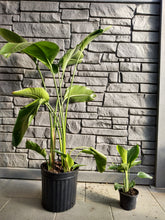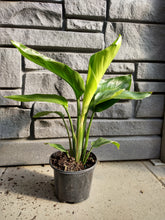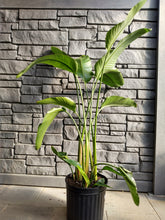The Bird of Paradise plant is a striking and tropical-looking houseplant, prized for its beautiful, bird-like flowers and large, paddle-shaped leaves.
- Light: These plants thrive in bright, indirect sunlight. Place your Bird of Paradise near a window with filtered sunlight, but avoid exposing it to intense, direct sunlight for extended periods as it may scorch the leaves.
- Temperature: Bird of Paradise plants prefer warm temperatures ranging from 65°F to 85°F (18°C to 29°C). They are sensitive to cold drafts, so keep them away from chilly windows or doors during the colder months.
- Watering: Provide a consistent watering schedule for your Bird of Paradise. Keep the soil evenly moist during the growing season (spring and summer), but avoid overwatering or letting the plant sit in waterlogged soil, as it can lead to root rot. In the winter, reduce watering frequency, allowing the top inch of soil to dry out between waterings.
- Humidity: These plants prefer higher humidity levels. If the air in your home is dry, consider using a humidifier or place a tray with water and pebbles beneath the plant to increase humidity.
- Soil: Bird of Paradise plants prefer well-draining soil. A mix of peat moss, perlite, and regular potting soil can work well. Ensure the pot has drainage holes to prevent waterlogged soil.
- Fertilizer: During the growing season (spring and summer), feed your Bird of Paradise with a balanced, water-soluble fertilizer once every 4-6 weeks. In the winter, you can reduce or stop fertilizing as the plant's growth slows down.
- Pruning: Prune the plant to remove dead or yellowing leaves and spent flower stems. This helps maintain the plant's appearance and health. Be careful while handling the plant, as its leaves can be sharp.
- Repotting: Younger Bird of Paradise plants may need to be repotted every year or two, while older ones can be repotted every 3-4 years. Repot in the spring when the plant is actively growing and choose a slightly larger pot with fresh, well-draining soil.






